
by Clifford Shack
September 7, 2011
from
HenryMakow Website
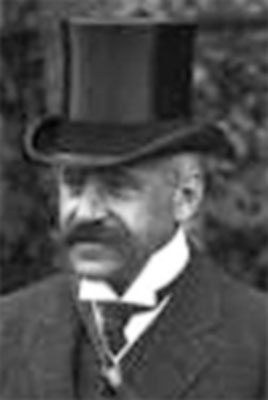
Jewish banker Maurice Ephrussi.
Baron Alphonse James de
Rothschild had an
agent whom he favored above the rest. His name was
Maurice Ephrussi and he
represented the French Rothschilds in the oil-rich Caucasus.
Maurice Ephrussi (Nov.18, 1849 - Oct.29, 1916) was a Ukrainian-born French
Jewish banker. His father had made a vast fortune exporting the wheat of the
Ukraine to Europe.
The Rothschild's were the Tsar's official banker. The Ephrussi's were the
Rothschild's agent to the Tsar. It was Maurice Ephrussi who first proposed
the Russian oil business to Alphonse de Rothschild.
Ephrussi thoroughly understood the Russian oil industry. He just knew that
with the Nobel brother's dynamite blasting through the Caucasus Mountains;
Rothschild-financed railroads could carry Russia's oil to the world if
Russia could get their hands on a suitable port on the Black Sea.

Maurice Ephrussi,
short
like his son
Maurice Ephrussi's pitch was not lost on Alphonse de Rothschild.
Alphonse
de Rothschild must have envisioned his family's newly acquired oil
refineries humming with an endless supply of cheap Russian oil. The wealth
that would result in the venture would be incalculable.
Maurice married
Baron Alphonse de Rothschild's youngest daughter, Beatrice, on June 5, 1883.
STALIN'S MOTHER
At the time of Stalin's conception (Feb. 1878), his mother, Ketevan "Keke"
Jughashvili neé Geladze (February 5, 1858 - June 4, 1937), was a beautiful
20-year-old woman.
She worked as a laundress for a Jewish wine merchant in
the Georgian city of Gori.
Ephrussi would have no reason to stop in Gori to visit a wine merchant
unless he wanted to pick up a few cases of champagne.
Ephrussi, though only 28-years-old in March of 1878 was no errand boy.
He
was a prince of European high-finance.
But wasn't Keke married? Could she have engaged in sex with the
young banker?
Consider the following quotes from Simon Sebag
Montefiore's "Young Stalin":
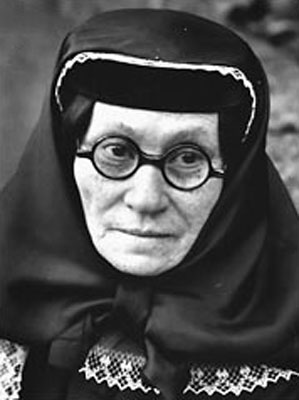
Keke
"As for Keke herself, it has always been hard to match the pious old lady
in her black nunnish headdress of the 1930s with the irrepressible young
woman of the 1880s. Her piety is not in doubt, but religious observance has
never ruled out sins of the flesh.
She certainly took pride in being "the
desired and beautiful girl" and there is evidence that she was much more
worldly than she appeared.
"As an old lady, Keke, supposedly encouraged Nina Beria, wife of Stalin's
Caucasian viceroy and later secret police chief, Lavrenti Beria, to take
lovers and talked very spicily about sexual matters:
"When I was young, I
cleaned house for people and when I met a good-looking boy, I didn't waste
the opportunity."
(pp.27-28)
Keke's husband Beso referred to Stalin (Soso) as "Keke's little bastard":
"When Soso hid, Beso searched the house screaming, "Where is Keke's little
bastard? Hiding under the bed? Keke fought back. Once, Soso arrived at
Davrichewy's house with his face covered in blood, crying: "Help! Come
quickly! He's killing my mother!" The officer ran round to the Djugashvilis
to find Beso strangling Keke."
As a young man Stalin worked at the Rothschild refinery in the storehouse,
and ran the union.
Montefiore writes:
"The Rothschild managing director, David Landau, regularly contributed to
Bolshevik funds, as recorded by the Okhrana - whose agents noted how, when
Stalin was running the Baku Party, a Bolshevik clerk in one of the oil
companies,
'was not active in operations but concentrated on collecting
donations and got money from Landau of the Rothschilds.'
It is likely that
Landau met Stalin personally.
Another Rothschild executive, Dr. Felix Somary,
a banker with the Austrian branch of the family and later a distinguished
academic, claims he went to Baku to settle a strike. He paid Stalin the
money. The strike ended."
Stalin financed Bolshevik activities and presumable his money came from the
Rothschilds.
THE CASE FOR EPHRUSSI
-
Ephrussi was the Rothschild pointman in the Caucasus.
-
It would have been him to deal with the Grand Duke in Tiflis.
-
Keke also worked at the Grand Duke's Palace. She had plausible reason to
be in the palace at the estimated time of Stalin's conception.
-
Stalin is the spitting image of Ephrussi.
-
Strong family resemblance to a close-up photo of Maurice's half-brother.
-
Stalin claimed to be the son of a priest. Judging from their family tree,
the Ephrussi's had married Levensohns and Kaans. The Ephrussis were probably
Kohanim (priest class).
Did Maurice Ephrussi, the son-in-law of Baron Alphonse de Rothschild father
Stalin in March of 1878?
Have we finally solved the 132-year old mystery surrounding Stalin's birth?
Anonymous said (September 8, 2011):
Was Ephrussi a Rothschild?
Consider this excerpt from "The Hare With Amber Eyes: A Hidden Inheritance"
by Edmund de Waal (2010) (page 93):
"All the Jewish finance houses of France are
anathematized by rote: 'Les
Rothschilds, Erlanger, Hirsch, Ephrussi, Bamberger, Camondo, Stern, Cahen
d'Avers... Membres de la finance internationale'.
The complex intermarriage
between the clans is repeated endlessly to build up a picture of one
terrible spider's web of intrigue, a web even more tightly bound when
Maurice Ephrussi marries Beatrice, the daughter of the head of the French
Rothschilds, Alphonse de Rothschild.
These two families now count as one."
So, for all intents and purposes... since Stalin was fathered by Maurice Ephrussi, he indeed was a Rothschild or rather a Ephrussi-Rothchild to be
more exact.
He was simply fathered outside society's legal parameters and
customs, but we are dealing with people who eat those laws and customs for
breakfast.
In fact, they create new ones for the rest of us...
Was Josef Stalin a Rothschild?
by Clifford Shack
September 1, 2011
from
Was-stalin-a-rothschild Website
|
The identity of Josef Stalin's
father has been a mystery for over 130 years. There were many rumors
but none remotely close to the truth.
Could Stalin's real father be
found among
the Rothschild bankers of the
19th century?
Look closely at the
far below photo
taken at the funeral of
Baron Alphonse de Rothschild in
1905. |
A few years ago I had written an article
entitled, “Was Stalin a Rothschild?” I came to ask the question for a number
of reasons.
It is well-known that, before Hitler's annexation of Austria, the Austrian
chancellor, Engelbert Dollfuss, had conducted an investigation into
Hitler's origins. He had discovered that
Hitler’s mother had worked for the banker,
Salomon Rothschild, in his Vienna residence.
Dollfuss had hoped to thwart Hitler’s annexation
of Austria by blackmailing him with this information.
The dossier containing the dark truth was called
the “Fatal File” in the book, "Inside the Gestapo" by Hansjurgen Koehler.
Both Dollfuss, and his successor, Schuschnigg, would lose their lives over
this information. It is to them that I dedicate this article. I also
dedicate it to the millions upon millions of people who were murdered by
Josef Stalin.
Since the drilling of the first oil well in western Pennsylvania in 1859 the
world has been re-created to conform to the new energy source. World Wars
were foisted upon humanity by hidden forces that sought mastery of the
earth's most precious natural resource. Political control over oil-rich
lands would be accomplished by any and all means necessary.
Of equal importance was mastery over land and
sea strategic to oil transportation.
Josef Stalin was born in the middle of the Caucasus/Caspian oil
theatre. His early revolutionary activity occurred in oil-rich Baku,
Azerbaijan. Curiously, he had worked for the Paris Rothschild's.
Sometime after the fall of the Soviet Union in 1991, once-secret Soviet
archives were opened to researchers. This resulted in books that presented
details of Stalin’s life that had been buried in those vaults. Information
from some of these books offered insight into Stalin’s rumored bastardy.
At the time of Stalin’s birth, his mother, Ketevan "Keke"
Jughashvili neé Geladze (February 5, 1858 - June 4, 1937), was a
beautiful 21 year old woman. According to information found within the
archives, she was not a faithful wife. The archives offered many quotes,
rumors and theories.
With this new information, I continued exploring the possibility that Stalin
was linked to the French Rothschilds. It was the French Rothschilds who
oversaw the family oil business in Russia. Their early oil supply came from
the city of Baku, Azerbaijan, in the Caucasus region of Central Asia.
I originally suspected Edmond de Rothschild. Edmond was the younger brother
of Aphonse de Rothschild who headed the French branch of the Rothschild bank
in the 1870s.
Throughout his career, Edmond cruised the waters of the Mediterranean on
behalf of the family’s banking business. He traveled on the family's luxury
steam yacht the “Gitana.”
According to our modern calendar, Josef Stalin was born on December 18,
1878.
That would put the general time of his
conception at March 18, 1878. My attempt to confirm or deny Edmond's
presence in the Caucasus was unsuccessful. I didn't have access to the
Rothschild family archives. I had the internet and what was available on
Amazon.
To make a long story short, I couldn't find the smoking gun that I
was looking for.
Though I was still convinced that there was a secret link between Stalin and
the Rothschilds, my investigation came to a halt. To make the matter more
difficult, there didn’t even seem to be any resemblance between Stalin and
any member of the French Rothschilds.
I shelved my investigation for about four years.
Since 9/11/2001, many people have become aware of the dark side of the oil
business. (America had paid an awful price to lay a natural gas pipeline
across Afghanistan). This new awareness prompted me to resume my conspiracy
research. I began the search anew for the natural father of Josef Stalin.
Briefly, Stalin’s mother worked as a laundress for a Jewish wine merchant in
the Georgian city of Gori. His name was Yakov Egnatashvili.
Researchers had reported the rumors suggesting
that Egnatashvili may have been Stalin’s natural father. There were other
rumors and theories. One rumored father was a Gori police officer named
Damian Davrichewy.
There was also talk of a Gori priest, Father
Christopher Charkviani. Another rumored father was the explorer
Przhevalsky, who was a well known Russian hero.
Most, but not all of these theories would be plausible, (Przhevalsky was
gay), if, Stalin hadn’t enjoyed a meteoric rise to power on the world stage,
at a time when the global elite were ushering in a
New
World Order fueled by oil energy.
The fact that Stalin rose so
fast, murdered between 20 and 60 million people, and died a peaceful,
natural death points to a political connection way beyond the reach of local Gori politics.
I would learn that Edmond de Rothschild couldn’t have possibly passed
through Gori on his way to Baku as no Trans-Caucasus railroad existed at the
time of Stalin’s birth. The railroad linking Georgia to Azerbaijan wouldn’t
be completed until the 1883. The Rothschilds would build it.
I would move beyond the idea that Edmond de Rothschild was Stalin's father.
So where was the Stalin-Rothschild link? The book, “Young Stalin”,
by Simon Sebag Montefiore provided me with a few clues.
One clue came in a note on page 23:
“Stalin later invented much about his life:
his official birthday was 21 December 1879, over a year later, an
invented date. He generally stuck to 6 December 1878 until an interview
in 1920 with a Swedish newspaper. In 1925, he ordered his secretary
Tovstukha to formalize the 1879 date.”
[Note: 6 December 1878 in the Russian Old Calendar is equivalent to
December 18 in our calendar.]
Stalin changed the date of his birth by a year
to alter his time of conception.
It had occurred to me that there may have been
an event that was trying to hide as it was somehow ultimately linked to the
meeting of his real parents in mid-March of 1878.
What special event was Stalin trying to hide by altering his birthdate?
To understand the significance of the event it would be helpful to provide a
brief history of the early Russian oil business and the one roadblock that
prevented Russian producers from achieving global success.
Here is an excerpt from Daniel Yergin’s Pulitzer-prize winning book,
The Prize - The Epic Quest For Oil, Money &
Power:
“While Nobel Brothers dominated distribution
of oil within the Russian Empire, beyond those borders Russian oil was
hardly a factor.
Geography locked the oil into the empire.
For example, to reach a Baltic port meant “2,000 miles, intermittent
water and rail transportation through western Russia.”
To make matters worse, severe winter weather
precluded the shipment of kerosene on the Caspian between October and
March, with the result that many refiners simply shut down for half a
year.
Even parts of the empire were inaccessible;
in the city of Tiflis, it was cheaper to import kerosene from America,
8,000 miles away, than from Baku, 341 miles to the west.”
“There were also limits to the market within the Russian empire;
illumination was far from a necessity for the vast peasantry and not
something they could afford in any event. Ever-growing production forced
the producers of Baku to look hungrily beyond the borders of the empire.
Seeking an alternative to the northern route
dominated by Nobel, two producers - Bunge and Palashkovsky - won
government approval to begin building a railroad that would go west from
Baku over the Caucasus to Batum, a port on the Black Sea that had been
incorporated into Russia in 1878 as the result of a war with Turkey.
But in the midst of construction, the price
of oil dropped, and Bunge and Palashkovsky ran out of money. They were
in desperate straits."
"Their rescue came from the French branch of a family that, among the
wars and governments and industries it had bankrolled, had also already
financed many of Europe’s new railroads. They owned a refinery in Fiume,
on the Adriatic, and were interested in acquiring lower-priced Russian
crude for it.
They loaned the money to complete the
railroad that Bunge and Palashkovsky had begun, acquiring in exchange a
package of mortgages on Russian oil facilities. They also arranged
guaranteed shipments of Russian oil to Europe at attractive prices. They
were the Rothschilds."
"…Russian oil was a project of the Paris Rothschilds.
That meant, in particular, of Baron Alphonse
- who had organized France’s reparations after its defeat by Prussia in
1871, was considered one of the best-informed men in all of Europe, and
was said to own the best pair of moustaches on the Continent - and of
his younger brother, Baron Edmond, who sponsored Jewish settlement in
Palestine.
The Rothschild loan allowed the railroad
from Baku to be completed in 1883, turning Batum almost overnight into
one of the world’s most important oil ports. In 1886, the Rothschilds
formed the Caspian and Black Sea Petroleum Company, known ever after by
its Russian initials - 'Bnito.' They built up their storage and
marketing facilities in Batum; the Nobel Brothers quickly followed suit.
The Baku-Batum railroad opened a door to the
West for Russian oil; it also initiated a fierce, thirty-year struggle
for the oil markets of the world.”
The Event - Treaty of
San Stefano
By officially altering his birthdate by a year, Stalin prevented his birth
from being associated with the
Treaty of San Stefano.
The Treaty was a peace settlement imposed on the
Ottoman government by Russia at the conclusion of the Russo-Turkish War of
1877–78. The treaty was signed on March 3, 1878 but later revised as it was
found too harsh on the Ottomans (see
Treaty of Berlin).
There was at least one treaty reparation that
remained unaltered by the revised Treaty of Berlin which was extremely
important to Imperial Russia and of course, the Rothschilds.
In fact, it would ensure the wild success of
both.
Rather than pay a huge imposed monetary penalty to Russia, the Treaty of San
Stefano "allowed" Turkey to give Russia the Port of Batum. Russian oil would
finally reach beyond the borders of the empire.
The Rothschilds would enter the Russian oil
business.
The Treaty of San
Stefano & the Stalin's Secret Father
The Rothschild courier network was noted for speed and security. The Rothschilds couriers kept the five Rothschild houses connected to each other
as well as linked to their clients.
It was the Rothschild courier network that gave the Rothschild an immense
advantage at the London stock market after Napoleon was defeated by the
British at the Battle of Waterloo. As a result of the speed of the courier
network, the Rothschild were the first in London to learn of Napoleon's
defeat.
The Rothschilds shared the news of Napoleon's
defeat with the British crown before putting the knowledge to work for them
at the London bourse. It is this level of courtesy and service that their
clients had come to expect.
It was this particular protocol that may have prompted Josef Stalin to lie
about his actual birthdate.
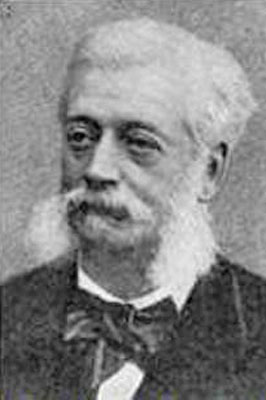
Baron Alphonse James de
Rothschild
Baron
Alphonse de Rothschild was considered
among "the best-informed men in all of Europe".
The Rothschilds employed agents all over the
world who fed them information. This information was delivered via their
legendary courier network. Alphonse de Rothschild had one agent in
particular whom he favored above the rest. His name was Maurice
Ephrussi. Ephrussi worked for the Rothschilds in the oil rich region of
Russia known as the Caucasus.
Maurice Ephrussi
(November 18, 1849 - October 29, 1916) was a Ukrainian-born
French Jewish banker. His father had made a vast fortune exporting the wheat
of the Ukraine to Europe. (see
Ephrussi Family)
The Ephrussi's were the Rothschilds' agents to
Imperial Russia. The Rothschild's were the Tsars official banker. The
Ephrussi's were the Rothschild's agent to the Tsar.
It was Maurice Ephrussi who first proposed the Russian oil business to
Alphonse de Rothschild. Born and raised in a Russian banking family,
Ephrussi thoroughly understood the Russian oil industry. He just knew that
with the Nobel brother's dynamite blasting through the Caucasus mountains,
Rothschild-financed railroads could carry Russia's oil to the world if
Russia could get their hands on a suitable port on the Black Sea.
Maurice Ephrussi’s pitch was not lost on Alphonse de Rothschild.
Alphonse de Rothschild must have envisioned his family's newly acquired oil
refineries humming with an endless supply of cheap Russian oil. The wealth
that would result in the venture would be incalculable.
Maurice Ephrussi would play a pivotal role in the Rothschild's successful
oil venture.
It is clear to see why Maurice Ephrussi was the clear choice as the
Rothschild agent to the Caucasus. The Ephrussi family had built their wheat
and banking empire in Odessa, a city on the Black Sea in the Crimea. From
Odessa, Ephrussi could easily sail across the Black Sea the port of Poti on
Georgia's west coast.
From Poti, he would take a passenger train to
the meet with the Viceroy in Tiflis who was the seat of government of the
Caucasus of that time. Ephrussi could also very easily be present at the
Treaty of San Stefano which was a coastal village on the Black Sea just west
of Istanbul.
Did Alphonse de Rothschild send Maurice Ephrussi to San Stefano or to Tiflis
after the signing of the Treaty of San Stefano?
As an agent of the Rothschilds, Ephrussi could have been assigned to brief the Viceroy on
details surrounding the treaty. He may have been asked to securely deliver
an original copy of the signed Treaty to the Viceroy. As well, Rothschild
could have sent Ephrussi to the Viceroy to gain permission to run the
Rothschild-financed Trans-Caucasus railroad to the newly acquired port of
Batum.
These are several plausible reasons why Ephrussi
would travel to the Viceroy's palace in Tiflis, Georgia.
The signing of the Treaty of San Stefano was signed on March 3,1878.
Ephrussi could have arrived at the Viceroy’s palace at the time of Stalin’s
conception. Considering that he would have been an honored guest of the
Viceroy's he would have been invited to stay on at the Viceroy’s palace. He
would have dutifully participated in the Imperial galas celebrating the
treaty signing.
But so what? In March 1878. Stalin's twenty year old future mother was
working in Gori.
Ephrussi would have no reason to stop in Gori to
visit a wine merchant unless he wanted to pick up a case of champagne to
present to the Viceroy along with his copy of the signed treaty. Though this
scenario was possible it is highly unlikely. Ehprussi, though only 28 years
old in march of 1878 was no errand boy. He was a prince of high-finance.
So how could Ephrussi possibly encounter the
beautiful Keke?
Was Stalin’s mother working in the palace at the time of Ephrussi’s stay?
"Young Stalin" page 26:
"Paternity suits develop proportional to the
power and fame of the child.
Once Stalin became Soviet dictator, his
rumored fathers included the celebrated Central Asian explorer Nikolai Przhevalsky, who resembled the adult Stalin and passed through Gori, and
even the future Emperor Alexander III himself, who had visited Tiflis,
supposedly staying at a palace where Keke toiled as a maid.
But the explorer was a homosexual who was
not near Georgia when Stalin was conceived, while Keke (Stalin’s mother)
was not in Tiflis at the same time as the Tsarevich."
Stalin’s mother worked at the palace of the
Viceroy of the Caucasus!!!
In March 1878, Maurice Ephrussi was a young, fabulously rich bachelor. Could
he have been at the Viceroy's palace at the same time as 20 year old Keke
Jughashvili? But Keke was married!

Keke
Would she have considered engaging in sex with
our young banker?
Consider the following quotes:
“Young Stalin” Page 26 & 27:
“As for Keke herself, it has always been
hard to match the pious old lady in her black nunnish headdress of
the 1930s with the irrepressible young woman of the 1880s. Her piety
is not in doubt, but religious observance has never ruled out sins
of the flesh.
She certainly took pride in being “the
desired and beautiful girl” and there is evidence that she was much
more worldly than she appeared.
As an old lady, Keke, supposedly encouraged Nina Beria, wife of
Stalin’s Caucasian viceroy and later secret police chief, Lavrenti
Beria, to take lovers and talked very spicily about sexual matters:
“When I was young, I cleaned house
for people and when I met a good-looking boy, I didn’t waste the
opportunity.”
"Young Stalin" Pages 27 & 28:
“…it is most likely that Stalin was the
son of Beso (Stalin’s father) despite the drunkards rantings about
Soso (Stalin) as a 'bastard.' A married woman was always expected to
be respectable, but it is hardly outrageous if the pretty young Keke,
a semi-widow, did become the mistress… when her marriage
disintegrated.”
Page 30:
“When Soso hid, Beso searched the house
screaming, 'Where is Keke’s little bastard? Hiding under the bed?'. Keke fought back.
Once, Soso arrived at Davrichewy’s house
with his face covered in blood, crying:
“Help! Come quickly! He’s killing my
mother!”
The officer ran round to the
Djugashvilis to find Beso strangling Keke.”
Did Maurice Ephrussi, the son-in-law of Baron
Alphonse de Rothschild father Stalin in the palace of the Viceroy of the
Caucasus in that March of 1878? Have we finally solved the 132 year old
mystery surrounding Stalin's birth?
Perhaps the following photos can take this conspiracy theory out of the
realm of “sketchy” and “far - fetched?”
Here is a photo of Josef Stalin:
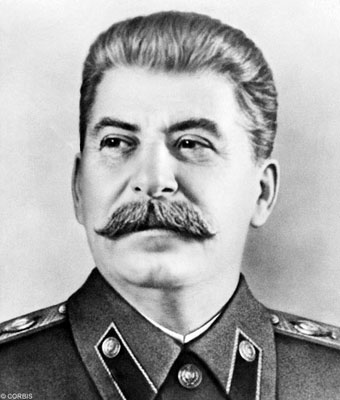
Photo of Maurice Ephrussi:

Maurice Ephrussi
This photo appeared in a French newspaper. Here
we see Maurice Ephrussi surrounded by the Rothschild's as they walk in the
funeral procession of Ephrussi's father-in-law, Baron Alphonse de
Rothschild.
The photo was taken in Paris on May 26,1905:
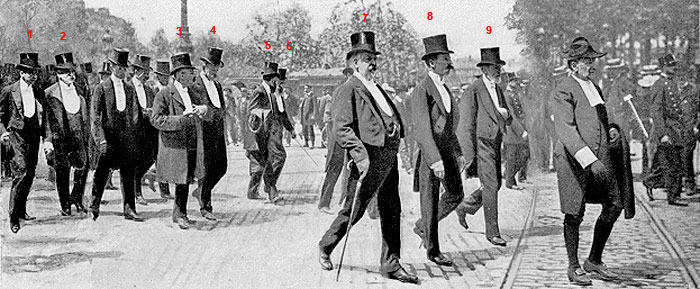
1. Baron James-Armand
de Rothschild. 2. Baron Léopold de Rothschild. 3. M. Maurice Ephrussi. 4.
Baron Albert de Rothschild.
5. Baron Leonino. 6. Dr Henri
de Rothschild. 7. Lord Rothschild. 8. Baron Édouard de Rothschild, fils du
baron Alphonse.
9. Baron Gustave de
Rothschild.
After the Russian Revolution of 1905, Maurice Ephrussi would continue to
serve the Rothschild's interests as the director of the Banque de France. He
would successfully race thoroughbreds for the rest of his life.
Did his son also serve the Rothschilds? (Josef was the name of the Ephrussi
family's long-time butler)
Maurice married Baron Alphonse de Rothschild’s youngest daughter, Beatrice,
on June 5, 1883. That was the same year that the Baku-Batum railroad was
completed.
When Stalin achieved prominence in the communist regime in the 1920s, he
installed his mother in the palace of the Viceroy of the Caucasus.
In the
palace, she is said to have occupied only one tiny room from where she wrote
frequent letters (in Georgian - she never managed to learn good Russian) to
her son, the Dictator.
So there you have it...







